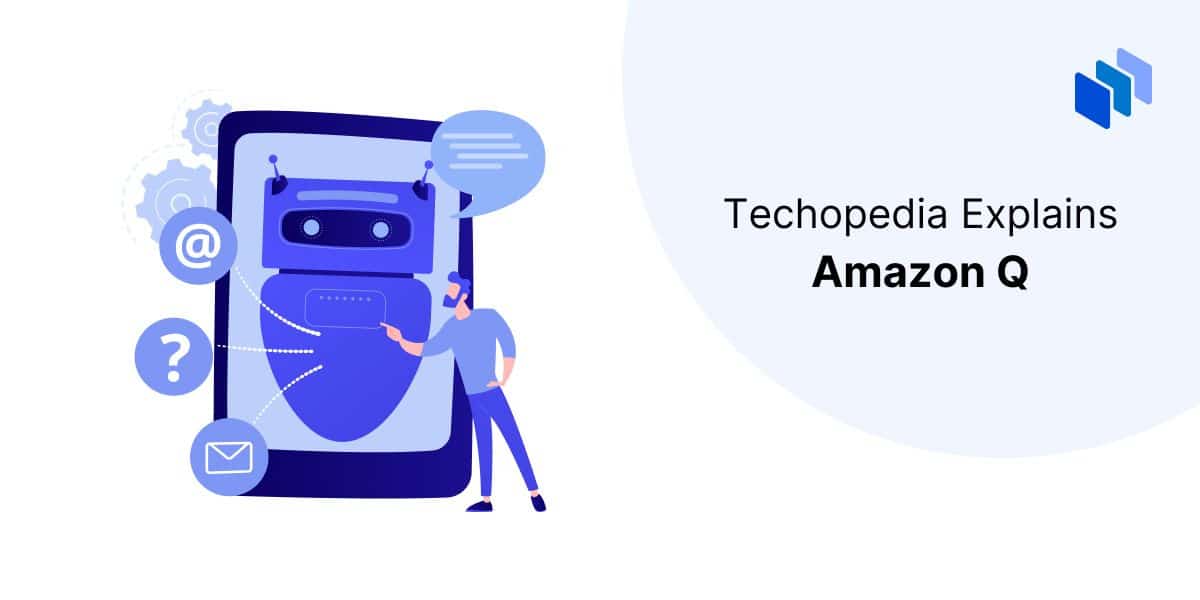What is Amazon Q?
Amazon Q is a generative AI-driven chatbot created by Amazon Web Services (AWS), which is designed to help users, including IT professionals, developers, business analysts, and contact center agents, query company data and knowledge bases, create natural language content, and generate code.
Antje Barth, principal developer advocate at AWS, said in the announcement blog post: “You can use Amazon Q to have conversations, solve problems, generate content, gain insights, and take action by connecting to your company’s information repositories, code, data, and enterprise systems.”
“Amazon Q provides immediate, relevant information and advice to employees to streamline tasks, accelerate decision-making and problem-solving, and help spark creativity and innovation at work.”
The chatbot was released on 28 November 2023 at the AWS re:Invent conference in Las Vegas in AWS CEO Adam Selipsky’s keynote speech.
How Does Q Work?
The Amazon Q generative AI assistant can be accessed via the AWS Management Console or a third-party app or documentation page.
The solution comes with over 40 built-in connectors, which can be used to connect to company, code, data, and systems to make them queryable. It can also connect to AWS services like Amazon QuickSight, Amazon Connect, and AWS Supply Chain.
After opening Q, users are given a number of predefined buttons to choose from a text box with the instruction to Enter a Prompt.
The default buttons include options such as:
- Draft a professional email
- Summarize a report
- Help plan a workshop
- Analyze market trends
- Write a blog post
- Brainstorm tagline
In the prompt box, users can start querying connecting apps and knowledge bases, as well as generating content like blogs, articles, and social media posts, or even producing code with code transformation capabilities.
It is important to note that user inputs won’t be used to train Amazon’s underlying models. While this suggests that user inputs will remain private, we recommend doing an independent risk assessment before adopting.
Use Cases
At the time of writing, AWS has shared some basic examples of Q in Action. These are summarized briefly below.
1. Querying a Company Knowledge Base
Users can use Q to ask questions about the data stored within an underlying knowledge base.
For example, users can ask the solution, “What are the latest guidelines for logo usage?” or “How do I apply for a company credit card?”
The assistant can then answer their questions and provide links to relevant resources. In this instance, this would be brand portals, logo repositories, T&E policies, and card applications.
2. Understanding the Supply Chain
Q can also be used to question the status of the supply chain. For instance, a user can query “What is the financial impact of delayed replenishment orders?” and Q will respond with a detailed analysis similar to the output below:
“The delays will cause 20 of your fast-moving products to go out of stock, with a revenue impact of $150k. You could expedite shipments to reduce the revenue impact by $95k, at a cost of $2.4K.”
3. Building Dashboards
Amazon Q’s integration with Quicksight also enables users to create dashboards. A user can enter a query such as “Show me sales by region as a stacked bar chart,” and Q will return a diagram that can be added to a dashboard view. This chart can be edited as needed.
4. Connecting Contact Center Agents With Customers
Lastly, Amazon Q in Connect enables the chatbot to automatically respond to real-time customer questions.
For example, if a user enters a question about fees for changing a rental car reservation, the chatbot can automatically generate a relevant response containing details the contact center agent can use to assist the customer.
This essentially provides contact center agents with supplemental information they can use to respond to customer queries faster.
Price and Availability
To help promote the launch, AWS has released a preview version of Q, available in the US East (N.Virginia) and US West (Oregon) AWS regions.
At the end of the trial period, pricing for Q starts at:
- $20 per user/month for Amazon Q Business
- $25 per user/month for Amazon Q Builder
The key difference between the two is that Amazon Q Builder contains all of Q Business’ capabilities but is also trained on 17 years of AWS-specific knowledge, which means it can provide guidance on AWS best practices, services and solutions.
It also includes application optimization and troubleshooting, code explanation and transformation, and is available via the AWS Management Console, AWS Console Mobile App, Slack, Microsoft Teams, integrated development environments, and more.
What Sets Q Apart in the Generative AI Market?
Upon release, the main differentiator for Q is its emphasis on enabling employees to search enterprise data assets, apps, and knowledge bases. It’s an enterprise-focused tool that’s designed specifically for drawing out insights from a dataset.
This approach is different from consumer-focused tools like ChatGPT (and even ChatGPT Enterprise), which primarily act as a general purpose, natural language generation and summarization tool.
Q’s greater focus on the enterprise is highlighted by the fact that it’s designed to understand employees’ roles and permissions and provides personalized interactions so that no one can access data that they’re not authorized to.
This differentiation is also supported by its deep integration with AWS’ vast enterprise product ecosystem.
At this stage, Q is most comparable to Microsoft 365 Copilot, which uses LLMs like GPT-4 to enable users to query data in connected products across Microsoft products such as 365 Chat, Teams, Outlook, Word, PowerPoint, Excel, OneNote, and Loop.
The Bottom Line
Amazon Q is a significant contender in the generative AI market, particularly for those organizations operating in AWS-dominated environments.
While powerful LLMs like GPT-4 and Bard will remain at the top of the heap for the foreseeable future, AWS has the potential to edge out Microsoft in the enterprise market.






